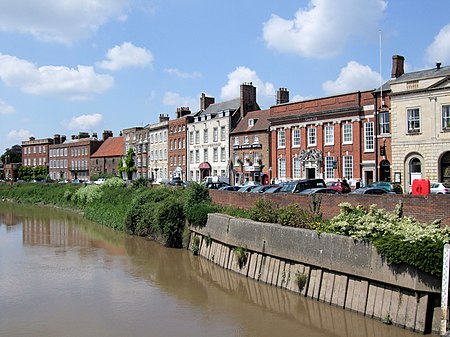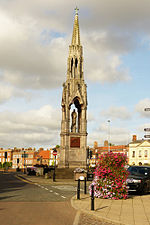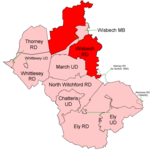Wisbech

Wisbech ( WIZ-beech) is a market town, inland port and civil parish in the Fenland district in Cambridgeshire, England. In 2011 it had a population of 31,573. The town lies in the far north-east of Cambridgeshire, bordering Norfolk and only 5 miles (8 km) south of Lincolnshire. The tidal River Nene running through the town is spanned by two road bridges. Wisbech is in the Isle of Ely (a former administrative county) and has been described as "the Capital of The Fens".Wisbech is noteworthy for its fine examples of Georgian architecture, particularly the parade of houses along the North Brink, which includes the National Trust property of Peckover House and the Crescent, a circus surrounding Wisbech Castle.
Excerpt from the Wikipedia article Wisbech (License: CC BY-SA 3.0, Authors, Images).Wisbech
The Crescent, Fenland District
Geographical coordinates (GPS) Address Nearby Places Show on map
Geographical coordinates (GPS)
| Latitude | Longitude |
|---|---|
| N 52.664 ° | E 0.16 ° |
Address
The Crescent
The Crescent
PE13 1EN Fenland District
England, United Kingdom
Open on Google Maps









